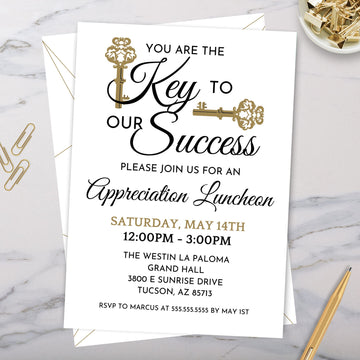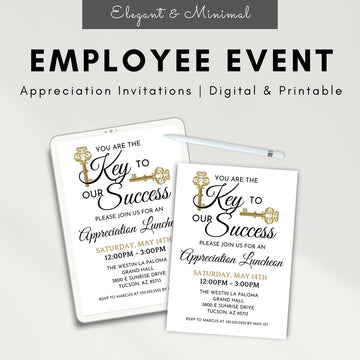Step-by-Step Guide to Planning an Unforgettable School Dance
Step-by-Step Guide to Planning an Unforgettable School Dance: Tips for a Night to Remember!
Planning a school dance can feel like a daunting task, but with the right approach, it can transform into one of the most memorable nights of the year! Whether you're orchestrating a lively prom or a cozy semi-formal gathering, every detail counts—from the theme and decorations to the music and refreshments. This step-by-step guide will navigate you through the essential elements needed to create an unforgettable school dance that leaves everyone buzzing long after the last dance. Get ready to unleash your creativity, rally your fellow students, and turn your vision into reality, crafting a night that will resonate in your school’s history. With thoughtful planning and a dash of enthusiasm, you can design an event that not only meets expectations but exceeds them, ensuring a celebration that everyone will cherish. Let’s dive into the tips and strategies that will help you plan a truly spectacular occasion!
What's Inside:
- Give your Dance Purpose
- What to budget for when planning a school dance
- How to Pick the Best Theme for your Dance
- Picking a Venue & What to consider
- Why a Schedule & Activities matter at a Dance
- Planning for Decorations and Setting the Mood
- Music & Entertainment: What you need to know!
- Critical considerations for Promoting your Event
- Last minute considerations when Planning a Dance Event
- What you should do After the Dance
Understanding the Purpose of the School Dance
When planning a school dance, the first crucial step is to understand its purpose. Is it a celebratory event like prom, a seasonal gathering such as a winter formal, or a themed dance to bring some fun to a regular school week? The purpose will shape many aspects of your planning, from the choice of theme to the tone of the event. A prom, for instance, is typically more formal and grand, often marking a significant milestone for students, while a casual themed dance might be more relaxed and playful, encouraging creativity and inclusivity. Creating a mixture of both casual and formal for a blended event is also popular, giving attendees the option to dress up or down.
Understanding the purpose also involves recognizing the desires and expectations of your attendees. Speak with various student groups to get a sense of what they envision for the event. This can include conducting surveys or organizing small focus groups. Gathering this input will ensure that the dance aligns with the students' interests and enhances their overall experience. It’s crucial to have a clear vision that resonates with the majority, as this will set the stage for a successful and memorable event. Whether a Student Council or PTA group is planning the event, voting and consensus are critical to the process of choosing.
Moreover, the purpose of the dance should align with the school's values and aims. It’s important to ensure that the event promotes a positive environment where all students feel welcome and excited to participate. This means considering inclusivity in your planning process, making sure that the dance is accessible and enjoyable for everyone. By understanding and integrating the purpose of the school dance into your planning, you lay the foundation for an event that is both meaningful and memorable.
Setting a Budget for Your School Dance
Once you’ve established the purpose of the dance, the next step is to set a realistic budget. This is a critical aspect as it will influence every decision you make, from the venue to the decorations and entertainment. Start by identifying all possible sources of funding. This could include contributions from the school, ticket sales, fundraising events, and sponsorships from local businesses. Having a clear picture of your financial resources will help you allocate funds more effectively.
Creating a detailed budget plan involves listing all expected expenses. Common costs include venue rental, decorations, lighting, sound equipment, DJ or band, refreshments, and promotional materials. It’s essential to get quotes from multiple vendors to compare prices and ensure you’re getting the best deal. Don’t forget to factor in unexpected expenses as well. It’s wise to set aside a contingency fund, which can be around 10% of your total budget, to cover any unforeseen costs that might arise.
Effective budget management requires continuous monitoring and adjustments. Keep track of all expenditures and regularly update your budget sheet. This will help you stay within your financial limits and make informed decisions if you need to cut costs or reallocate funds. Transparency is key, so communicate the budget details with your planning committee to ensure everyone is on the same page. By setting and managing a budget thoughtfully, you can create a fantastic event without financial stress.
Choosing the Perfect Theme for the Dance
The theme of your school dance is one of the most exciting aspects of the planning process. It sets the tone for the entire event and influences decorations, attire, music, and even the activities. When choosing a theme, consider what will appeal to your audience. Popular themes include masquerade balls, Hollywood glamour, enchanted forest, and decades (like the 70s or 80s). The key is to pick a theme that excites students and encourages them to participate and dress up.
Brainstorming sessions with your planning committee can be very helpful in selecting a theme. Encourage creativity and open discussion to generate a wide range of ideas. Once you have a list of potential themes, conduct a vote among the student body to decide the final choice. This democratic approach not only ensures that the majority is happy with the theme but also increases student engagement and anticipation for the event.
After selecting the theme, think about how to bring it to life. This includes everything from invitations and decorations to music and refreshments. For example, a Hollywood glamour theme could feature a red carpet entrance, gold and black décor, and classic movie soundtracks. Detailed planning and careful attention to the theme will create a cohesive and immersive experience that transports attendees to a different world, making the dance truly unforgettable.
Selecting the Right Venue for Your Event
Choosing the right venue is crucial for the success of your school dance. The venue sets the stage for the event and significantly impacts the overall atmosphere. When selecting a venue, consider factors such as size, location, and amenities. The venue should comfortably accommodate your expected number of attendees, with enough space for dancing, seating, and any planned activities. It should also be easily accessible to all students, including those with disabilities.
School gyms and auditoriums are common choices for school dances, but don’t be afraid to think outside the box. Community centers, local event halls, or even outdoor spaces can provide unique and exciting settings. Visit potential venues to get a feel for the space and discuss options with venue managers. Pay attention to details like lighting, acoustics, and available facilities. Ensure the venue has adequate restrooms, parking, and safety measures in place.
Once you’ve chosen a venue, make sure to book it well in advance and confirm all the details in writing. This includes the date, time, cost, and any additional services provided by the venue, such as security or cleaning. Establishing a good relationship with the venue staff can be beneficial, as they can provide valuable assistance on the event day. With the right venue, you can create a perfect backdrop for a night to remember.
Planning the Dance Schedule and Activities
A well-planned schedule is essential for keeping the dance lively and engaging. Start by outlining the main segments of the evening, such as guest arrival, welcome speeches, dinner or refreshments, dancing, and any special activities like a photo booth or a dance-off. Allocate specific times for each segment to ensure a smooth flow throughout the night. Consider incorporating a mix of activities to cater to different interests and keep everyone entertained.
When planning the schedule, think about the pacing. You want to build excitement gradually, leading up to the peak of the evening. Begin with a warm welcome and some light music as guests arrive and mingle. Follow this with any formalities, such as speeches or the crowning of a prom king and queen. After the formalities, shift the focus to dancing and activities. Keep the energy high with an engaging playlist and interactive entertainment.
In addition to the main events, consider incorporating surprise elements to add a touch of magic to the night. This could be a surprise performance, a themed giveaway, or a special guest appearance. These unexpected moments will delight attendees and create lasting memories. Ensure that your schedule is flexible enough to accommodate any changes or delays that might occur. By planning a dynamic and well-paced schedule, you ensure that the night is filled with excitement and memorable moments.
Organizing Decorations and Ambiance
Creating the right ambiance is key to transporting attendees into the theme of the dance and enhancing their overall experience. Start by envisioning how you want the space to look and feel. Consider the color scheme, lighting, and decorative elements that will bring your theme to life. For example, a masquerade ball might feature elegant drapes, twinkling lights, and ornate masks, while a beach party theme could include tropical flowers, beach balls, and vibrant colors.
To achieve a cohesive look, plan your decorations in detail. This includes centerpieces, table settings, wall hangings, and any large installations. DIY decorations can be a cost-effective and creative way to add personal touches to the event. Gather a team of volunteers to help with crafting and setting up the decorations. This not only saves money but also fosters a sense of community and involvement among students.
Lighting plays a crucial role in setting the mood. Use a combination of string lights, spotlights, and candles to create the desired atmosphere. Consider hiring a professional lighting technician if your budget allows. Music and sound also contribute to the ambiance, so ensure that the sound system is of high quality and that the music aligns with the theme. By carefully planning and executing your decorations and ambiance, you can create an immersive environment that captivates attendees from the moment they arrive.
Coordinating Music and Entertainment
Music is at the heart of any dance, setting the rhythm and energy of the night. Choosing the right music involves considering the preferences of your attendees and the theme of the event. Create a playlist that includes a mix of popular hits, classic dance songs, and theme-specific tracks. To keep the dance floor active, include a variety of genres and tempos, catering to different tastes and ensuring there’s something for everyone.
Hiring a DJ or live band can elevate the music experience. A professional DJ can read the crowd and adjust the music accordingly, keeping the energy high and the dance floor packed. If you opt for a live band, choose one that can perform a range of songs and genres. Discuss your music preferences and any specific requests with them in advance to ensure they align with your vision. Additionally, consider incorporating interactive elements like song requests or a dance-off to engage attendees.
Beyond music, think about other forms of entertainment that will enhance the experience. Photo booths with themed props, professional photographers, and fun activities like karaoke or a talent show can add variety and excitement to the event. Make sure to schedule these activities at strategic times to keep the momentum going. By coordinating a diverse range of music and entertainment, you create an engaging and dynamic atmosphere that keeps attendees entertained throughout the night.
Promoting the Dance Effectively
Effective promotion is crucial to ensure a high turnout and build excitement for the dance. Start by creating eye-catching promotional materials that reflect the theme and tone of the event. This includes posters, flyers, and digital graphics for social media. Use vibrant colors, engaging images, and clear information about the date, time, location, and ticket details. Place posters in high-traffic areas around the school and distribute flyers during lunch breaks and after school.
Leverage social media to reach a wider audience. Create event pages on platforms like Facebook and Instagram, and regularly post updates, teasers, and behind-the-scenes content. Engage with students by running contests, such as a raffle for free tickets or a prize for the best-themed costume. Encourage students to share the event on their social media profiles to increase visibility and generate buzz. Word of mouth is also powerful, so enlist the help of student leaders and influencers to spread the word.
Consider hosting pre-event activities or mini-events to build anticipation. This could include a countdown on social media, a themed dress-up day at school, or a flash mob to promote the dance. These activities not only generate excitement but also create a sense of community and involvement. By promoting the dance effectively, you ensure that students are aware of and excited about the event, leading to a successful and well-attended dance.
Preparing for the Big Night: Final Checklist
As the big night approaches, it’s essential to ensure that everything is in place for a smooth and successful event. Create a final checklist that covers all aspects of the dance, from logistics to last-minute details. Start by confirming all bookings and arrangements, including the venue, entertainment, decorations, and refreshments. Double-check the schedule and ensure that all team members are aware of their roles and responsibilities.
Conduct a walk-through of the venue a few days before the event to identify any potential issues and make necessary adjustments. Check the lighting, sound system, and setup to ensure everything is functioning correctly. Make a plan for setting up decorations and arranging the space on the day of the dance. Assign specific tasks to team members and volunteers to streamline the process and ensure that everything is completed on time.
On the day of the dance, arrive at the venue early to oversee the setup and address any last-minute concerns. Have a backup plan in place for any unexpected issues, such as technical difficulties or weather changes if the event is outdoors. Make sure to have contact information for all vendors and team members handy. By preparing thoroughly and staying organized, you can ensure that the event runs smoothly and that everyone has a fantastic time.
Post-Dance Activities and Feedback Collection
The excitement doesn’t have to end when the dance is over. Post-dance activities and feedback collection are important for wrapping up the event and planning future dances. Start by organizing a clean-up crew to ensure the venue is left in good condition. This can be done immediately after the dance or the following day. Thank all volunteers, team members, and vendors for their hard work and contributions.
Collecting feedback from attendees is crucial for understanding what worked well and what can be improved. Create a feedback survey that covers various aspects of the dance, such as the theme, music, activities, and overall experience. Distribute the survey through email or social media, and encourage students to provide honest and constructive feedback. Analyzing this feedback will provide valuable insights for future events and help you make necessary adjustments.
Finally, share highlights from the dance to keep the memories alive. Post photos and videos on social media, and consider creating a slideshow or video montage that captures the best moments. Recognize standout attendees and award prizes for best costumes or dance moves. By engaging with students after the event and celebrating the success of the dance, you create a lasting positive impact and build anticipation for future school dances.
Planning an unforgettable school dance is a rewarding and fulfilling experience. By following this step-by-step guide, you can navigate the complexities of event planning and create a night that students will remember for years to come. From understanding the purpose and setting a budget to choosing a theme, selecting a venue, and coordinating entertainment, each step is critical in bringing your vision to life. With thoughtful planning, creativity, and enthusiasm, you can design an event that exceeds expectations and leaves a lasting legacy in your school’s history.
Save this Article for Later
More Event Ideas You Might Like
15 Best Fundraiser Ideas for Non Profit Organizations
Best Fundraiser Ideas for Busy Event Planners


























Leave a comment